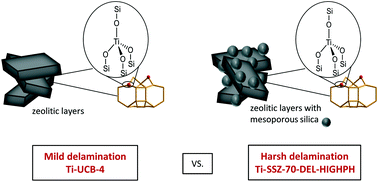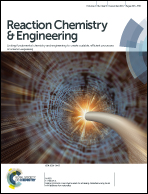Epoxidation of 1-octene under harsh tail-end conditions in a flow reactor II: impact of delaminated-zeolite catalyst surface area and structural integrity on catalytic performance†
Abstract
Building on our previous study of delaminated-zeolite catalysts for harsh tail-end conditions in an epoxidation flow reactor employing organic hydroperoxide as oxidant, this manuscript compares approaches for delamination in catalyst prepration. In one, a mild method of delamination is used for synthesis of Ti-UCB-4, in which fluoride in organic solvent is used as a mineralizing agent to affect delamination, while in another, catalyst Ti-SSZ-70-DEL-HIGHPH is synthesized by delamination under high-pH conditions and results in the highest external surface area, similar to that previously reported for ITQ-2. We also compare both materials to the calcined 3-D zeolite consisting of Ti-SSZ-70, a control which underwent no delamination treatment. Results of long-term flow reactor catalytic testing demonstrate a distinct 2.5-fold increase in reaction-rate constant k′ on a mass basis for Ti-UCB-4 relative to 3-D Ti-SSZ-70, and a lack of long-term deactivation for both catalysts. In contrast, for Ti-SSZ-70-DEL-HIGHPH, due to deactivation, no steady-state behavior is observed for either conversion or selectivity with increasing times on stream. A combination of data from powder X-ray diffraction (PXRD), nitrogen physisorption at 77 K, high-angle annular dark-field scanning transmission electron microscopy (HAADF-STEM), and UV-visible (UV-vis) spectroscopy demonstrate Ti-SSZ-70-DEL-HIGHPH to be comprised of a combination of crystalline and amorphous phases. Control experiments demonstrate a negative synergy on catalysis when both phases are combined in a single catalyst, which leads to decreased conversion, at levels below values predicted based on the linear combination of the two phases present.



 Please wait while we load your content...
Please wait while we load your content...